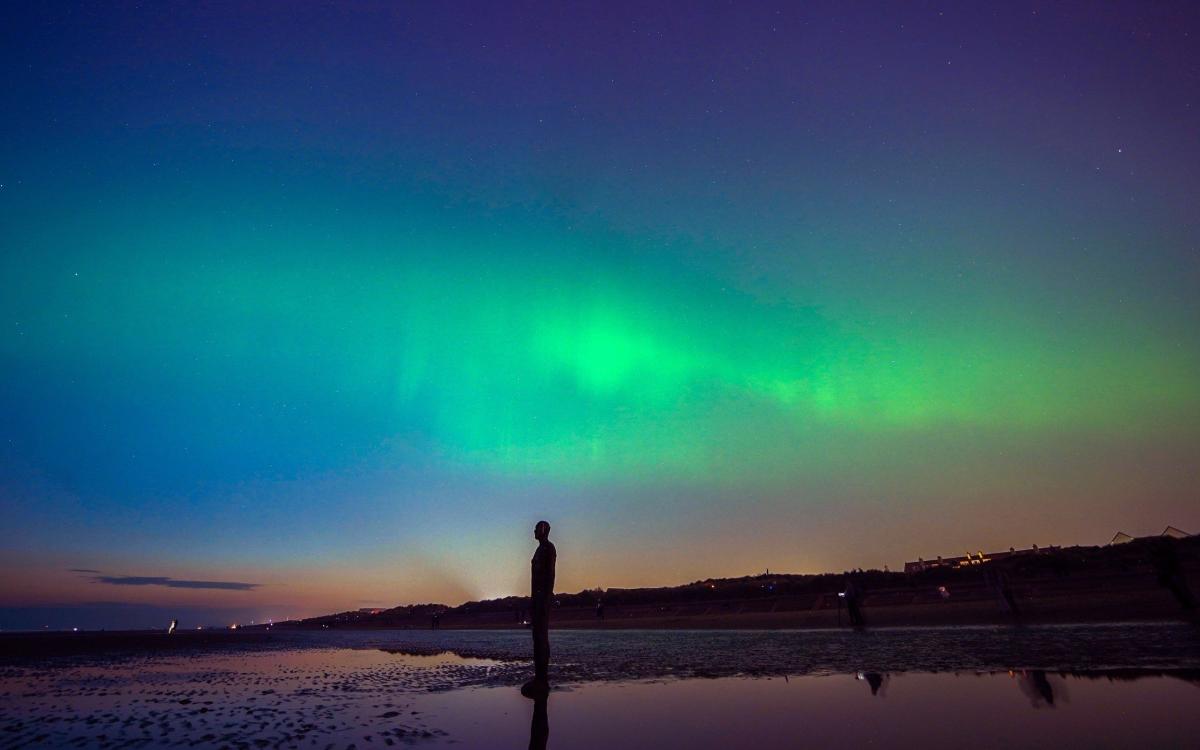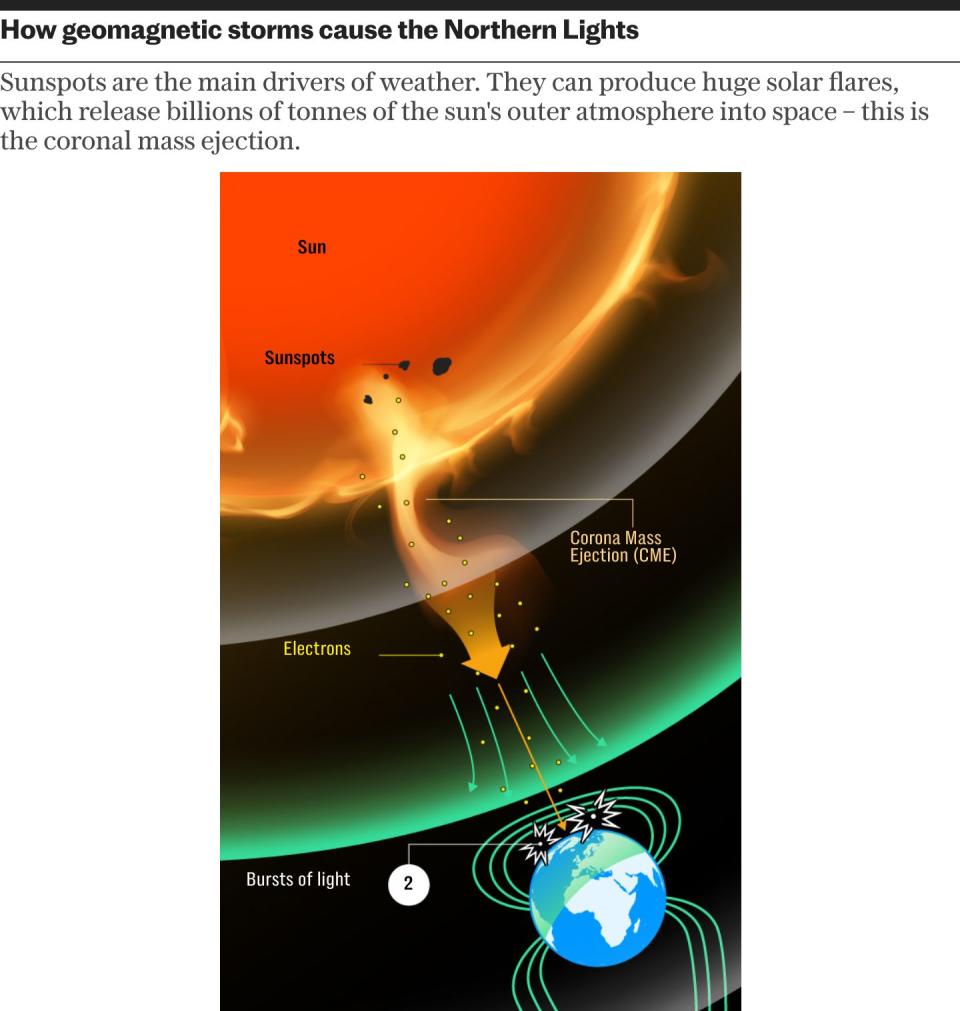


The Northern Lights could be visible from Britain this weekend, and shine even brighter than the aurora in May, following a massive solar flare.
The European Space Agency sent out an alert that an X9.0 coronal mass ejection had been picked up around 1pm on Thursday afternoon – the strongest detected since the current solar cycle began in December 2019.
The wave of charged particles is likely to hit Earth’s atmosphere on Saturday, with an aurora expected if the skies are clear.
That is most likely in the north, east and south of Britain on Saturday evening although more cloud and some rain is expected in the west.
In May, the Northern Lights were seen across much of Britain following a series of powerful solar storms which peaked with a flare of magnitude X8.7. However, Friday’s flare was even stronger.
Silvia Dalla, a professor of Solar Physics at the University of Central Lancashire, commented: “Solar flares and fast coronal mass ejections (CMEs) are large expulsions of plasma and magnetic fields. This strong geomagnetic activity results in breathtaking displays of the Northern Lights.
“If we get a repeat of the solar situation we saw in mid-May, we will potentially see more spell-bounding auroral activity across the UK skies.
“Finding a good spot to view the Northern Lights can be challenging, and conditions can change quickly. Aurora-hunting is a late-night activity, and the optimum time to view the spectacle is usually from 11pm to 12am onwards.
“To maximise your chances of viewing the aurora, the sky needs to be as clear as possible. Look northwards and try to find a place with dark skies, ideally away from a city where light pollution can interfere with the view.”

Auroras occur when solar particles excite molecules in Earth’s upper atmosphere, causing them to glow, the colour depending on what chemicals are hit.
Red and pink light is produced from collisions with nitrogen molecules at low altitudes while green is produced by oxygen molecules higher up.
The sun’s magnetic field goes through a cycle approximately every 11 years and is set to peak in July 2025.
The current solar cycle began in December 2019 and is expected to continue ramping up over the next year, increasing the chance of solar flares and plasma bubbles which send charged particles shooting towards Earth.
Solar cycles occur because the sun’s magnetic poles flip periodically, with activity peaking just as the North and South Poles swap places.
Although the Northern Lights are often visible in the North of England and Scotland during the winter months, it is rare for activity in the sun to be strong enough to reach further south.
The peak flare in May led to radio blackouts and there are fears this weekend may also cause problems.


The European Space Agency said: “The coronal mass ejection is predicted to arrive from late on October 5 with the potential to trigger moderate to strong geomagnetic disturbances.”
Nasa astronaut Chris Hadfield added: “The sun has been hyperactive and Earth’s deflector shields are up. Watch for good aurorae.”
A spokesman for the Met Office said: “There’s a potential for aurora sightings over the next few nights, especially in the north on Saturday night underneath any clear spells.”
The largest solar storm ever recorded, The Carrington Event in 1859, knocked out telegraph systems and even set fire to paper in offices.
Extreme space weather has already caused widespread disruption, with a geomagnetic storm leaving six million people without power in 1989 while Apollo astronauts narrowly missed being exposed to deadly radiation in 1972 and solar flares in 2003 forced the crew of the International Space Station to take cover.